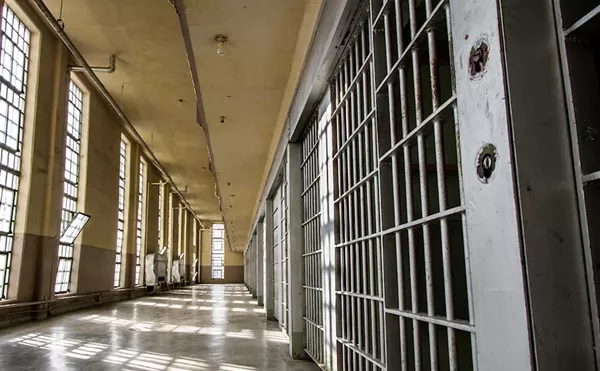
Audio By Carbonatix
[
{
"name": "GPT - Leaderboard - Inline - Content",
"component": "35519556",
"insertPoint": "5th",
"startingPoint": "3",
"requiredCountToDisplay": "3",
"maxInsertions": 100,
"adList": [
{
"adPreset": "LeaderboardInline"
}
]
}
]

National Wildlife Federation.
In 2013, the National Wildlife Federation sent divers to look at Enbridge, Inc.'s aging straits pipelines, finding wide spans of unsupported structures encrusted with exotic zebra mussels and quagga mussels.
Update:
According to a statement released Sunday, Enbridge says the federally required pressure tests were completed over the weekend with both pipelines passing. For the tests, the pipes were emptied of oil and pumped with water up to 1,200 psi, far higher than its normal pressure of 150 psi.
"The hydrotest is an industry and regulatory accepted way of confirming that our past maintenance and inspection programs were and will continue to be effective in keeping Line 5 operating safely and reliably into the future," the statement says. "Passage of the pressure test also is a credit to the unique and thoughtful design of Line 5 — from the seamless, cored steel pipes, to splitting the line into two through the Straits, to the low operating pressure – the engineers of the Straits segment of Line 5 had a clear vision for building this vital piece of infrastructure to serve safely in the Straits, well into the future."
On Thursday, July 6, engineering firms will present state-ordered risks and alternatives study analysis for Line 5 at 5 p.m. at Holt High School, 5885 Holt Rd., Holt, just outside of Lansing. A public feedback meeting will follow at 8 a.m. on Monday, July 24 at Holt High School.
Originally posted 10:32 a.m. on Friday, June 9:
Canadian pipeline company Enbridge is gearing up to conduct a federally required pressure test to check the integrity of its controversial 64-year-old dual Line 5 pipelines located at the bottom of the Straits of Mackinac.
Per a Detroit News report, the company will pump high-pressure water through one of the pipes for four hours, and then monitor for leaks for another four hours. The test of the first pipe will occur Saturday, while the other pipe will be tested later this month. It's the first time high-pressure water has been pumped through the pipes since they were originally installed in 1953.
The tests come amid pressure from environmentalists to shut down Line 5, who say the aging pipelines are too great of a risk to Michigan's most valuable resource. The pipeline pumps 23 million gallons of oil and natural gas a day under the straits, and a National Wildlife Federation-comissioned computer simulation released in 2014 found that a Line 5 spill could flow into either Lake Michigan or Huron with approximately equal probability.
Enbridge maintains that Line 5 is safe, saying it closely monitors the pipelines using an array of devices including remote control submarines and sensors that travel inside the pipelines, checking the thickness of the walls. However, critics point to the company's track record, noting that in recent years it was found that due to shifting sands large expanses of the pipelines did not have anchoring at an interval of every 75 feet per the original agreement with the state. The company has since added more anchors. Additionally, the company noted in a 2016 report to the Environmental Protection Agency that parts of the pipeline's original coating have deteriorated.
In 2010, an Enbridge line near Marshall ruptured, which was the largest inland oil spill in U.S. history.







